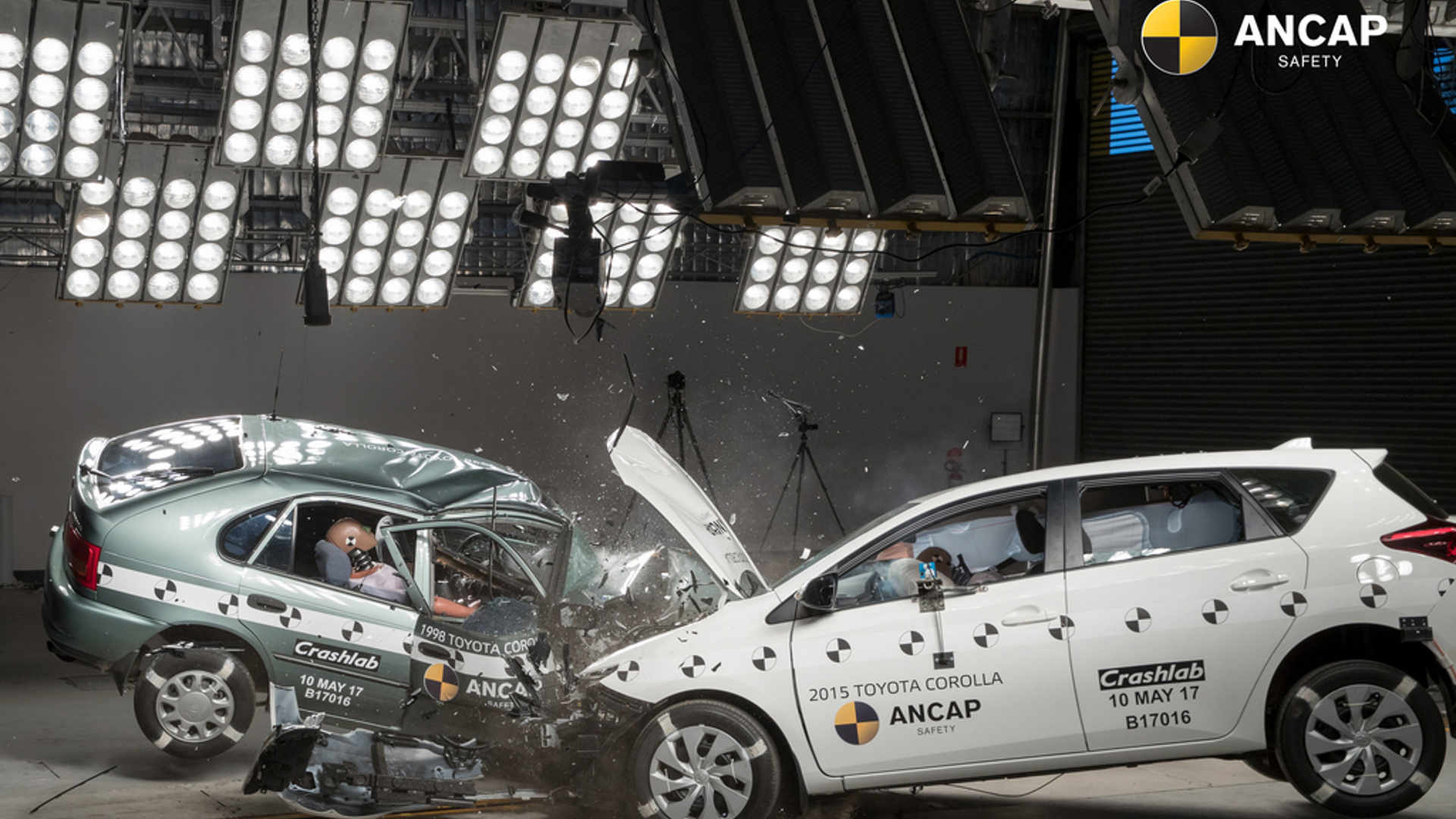How much safer have cars gotten in the last 20 years? According to this crash test from Australia and New Zealand vehicle safety group ANCAP, the difference can be massive.
Think of the Australasian New Car Assessment Program (ANCAP) people like Australia's version of the Insurance Institute for Highway Safety. They're an independent group with a goal of improving highway safety. In addition to advocacy work, they crash test new vehicles and assign them a safety rating.
ANCAP's data shows that while vehicles in Australia built in the year 2000 or before makeup just 20 percent of the fleet, they're involved in 33 percent of fatal crashes in that country. That's four times the fatality rate of more modern cars, and while that's based on data from Australia and New Zealand, their cars are designed to standards much the same as ours.
To illustrate just how much safer cars have become in that short time, they pit 1998 Corolla versus 2015 Corolla. The new car was a 2015 Toyota Corolla hatchback. The same car we get as the 2017 Toyota Corolla iM. The older car was a 1998 Corolla hatchback. We got the same model here but in sedan form. And while a 1998 Canadian Corolla would have a driver's side airbag, unlike this New Zealand spec car, the result would likely not be much different.
The test was a standard offset frontal impact, with both vehicles travelling at just 64 km/h; the kind of collision commonly seen on a faster urban or slower rural road. ANCAP says that the 1998 car "sustained catastrophic structural failure with dummy readings showing an extremely high risk of serious head, chest and leg injury to the driver." Out of 16 possible points, the car scored "just 0.40... – zero stars."
How did the new car fare? "The current model performed very well with a five star level of protection offered, scoring 12.93 out of 16 points."
The differences are clear when you watch the video. On the newer car, the area around the passenger compartment shows little damage. The nose is crumpled, but the A-pillar and roof are largely intact. The older car "has just completely collapsed." The A-pillar and roof are massively deformed and the driver hits their head on the dashboard. The driver's side wheel has penetrated into the footwell, and the door beam has punctured the door skin.
Cars and trucks keep getting safer, and that's even when the worst-case scenario - a collision - happens. Newer cars have not just better engineering and more airbags, but also more safety features like driver alerts, automatic braking, and other warnings that can help you avoid the collision in the first place.
Much like the IIHS' test from 2009 that put a 2009 Chevrolet Malibu against a 1959 Bel Air, this test shows that they don't make cars like they used to. And if you're inside a newer one during a crash then you should be happy they don't.

